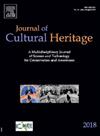CO2 snow microblasting of submicron particles from cellulose-based cultural heritage objects: Comparison with traditional dry cleaning methods
Abstract
Library collections are mostly made of porous cellulose-based materials such as papers and textiles. Submicron particles, representing up to 90% of particulate matter (PM) mass in libraries and archives, deposit on book surfaces and can also penetrate into small openings, including inter-fibre spaces. These particles can cause degradation of archival documents and therefore it is necessary to clean them. An alternative method of cleaning using the CO2 snow jet was tested and compared with six traditional mechanical dry cleaning techniques. Different types of papers and textiles (bookbinding cloths) commonly used in library collections were treated with the jet using a newly developed automatic system. Measurements included the assessment of particle removal efficiency and possible degradation of the cellulose materials. The method was verified using real archival documents. Results revealed that the jet was effective in removing submicron particles, including those embedded in the fibrous surface. The CO2 snow jet did not alter the surface properties of uncoated papers and textiles, whereas the degradation of coated samples was probably caused by surface temperature decrease after the CO2 snow application. In contrast, the mechanical dry cleaning methods were almost ineffective for the submicron PM. Moreover, the mechanical techniques alter the surface by leaving visible crumbs of the cleaning material, releasing fibers, and changing of fibers structure. The results indicate that CO2 snow jet cleaning using the automatic system is a suitable method for common types of papers and textiles with uncoated surfaces.

 求助内容:
求助内容: 应助结果提醒方式:
应助结果提醒方式:


